Cactus di Fuoco's Blog, page 18
September 24, 2022
Arboreal pircio
(Hai perso la strada, viandante? Se stai cercando questa pagina in italiano, puoi trovarla QUI!)
Arboreal pircio
(Pethra anthimus arborus)

Origin
Arboreal pirci are small animals originated on the planet Furioh, a rocky celestial body located in a far solar system that rotates around a red star: the Lilyar System.
This species, originated and mainly present around the area of the Big Puddle, collects in itself a series of traits that makes its survival to this day a real mystery. However, from a series of fossil findings it was easy to estabilish that this is actually a relatively ancient species, descending from the pirciocyon, an ancestor that sported charactertistics apparently much more useful to its survival in nature. How it happened that the pirciocyon had later evolved to become this poor creature constitues another logical challenge for the researchers, still unsolved.
The arboreal pircio owes its name to the furiohus physicist Arboreus, which discovered this species and the force of gravity at once when he literally stumbled upon it. “Pethra”, the Latin name that distinguished its family, comes from their habit to sleep balled up that, due to their gray color, ends up making them look like stones.“Anthimus” is a Latin word that only indicates the arboreal pircio, and it means "one that doesn't like to stay on the ground". When pirci are on the ground, indeed, they're clumsy, and easy prey of their natural enemies, the Shabatt. Their problem is that they don't fare much better on trees.
A single individal is called a "pircio", more than one are "pirci".
Average life span
The exact life span of a pircio is unknown, since these small animals have never been bred in captivity and get predated, or die of non-natural causes, all the time before the natural conclusion of their life cycle. Studies about it will soon get conducted.
Appearance
The pircio is a small sized animal, which scores from five hundred grams to a kilo of weight, for twentyfive-thirty centimeters of max length, including its slim, long tail covered in thin hair. This tail doesn't get used for balance at all, being the pircio completely devoid of it. Normally, indeed, it keept it slightly lifted from the ground, and he moves it only when it's scared or in an alarmed state. The real use of the pircio's tail will be revealed only later on during its biological cycle, only for a certain period of its life: it's used to cling to other pirci in the water, when the current is very strong and threatens to drag them away.
Although potentially both the male and the female could reach a good size, males are more often able to reach the maximum dimension of the species.
The profile of its rounded body is reminiscent of the one of an animal from the Arvicolinae family, but its muzzle is thicker and heavier, ending with a strongly pigmented nose and characterized by big, black eyes (the white of the sclera isn't visibile). Although a pircio can seem related to dormice at first glance, it's actually genetically closer to a canid.
The pircio is covered in a thick, partially hydrorepellent gray fur, which fades to white on its belly and to brown on their back, and which isn't considered useful nor precious in the fur sector.
Behavior
The arboreal pircio, despite its name, is terrible on the ground and is completely inept at climbing. To avoid falling while it walks, the pircio adopts a typical slow, cautious gait, that become arythmic and wobbly when it goes faster.
On the other hand, the pircio is a splendid swimmer, a skill that helps it survive n his favorite environment but is otherwise useless seeing its lack of memory, intelligence, and sense of direction.
Pirci are famous for their phobia towards blonde people, probably traceable up to the terrible Shabatt, a predator from Furioh that occupies the same habitat as pirci: these animals are covered in a blonde fur and are easy to find at a certain height, clinging to trees. This generates some confusion in the pircio's mind, which probably sees the hair of blonde people as Shabatts ready to devour them.
Arboreal pirci aren't bred as pets, both because they seem to be totally uninterested in creating bonds with species other than their own, and due to how hard it is to make them survive (even if they're fairly hardy, they're virtually unable to understand the dangers surrounding them and avoid them). It has been observed in nature that their social life can only be focused on one species at a time: the specimens that have been raised by other species, like the young pirci stolen from the amisci owls, show no attachment to their species of origin.
So, nobody wants them in their home.
Birth and growth
Pirci's lair are small holes in the ground, that have a use only during the raising of their babies, and in the last months of the mother's pregnancy. These holes are dug almost under the roots of plants that produce nuts or berries, in order to hide and cover their lair with leaves and easily find food at the same time; the shrubs under which it's easier to find them are the hay spheres, tasty berries that have overabundant nutrients that will sustain both mother and offspring during the cold seasons. Due to this, the hay spheres have also gained the name of pirci-spies, because it looks like they're always peeking inside the holes dug by these animals.
The burrows of arboreal pirci are simple, because otherwise, seeing their scarse sense of direction, they wouldn't know how to come out of them.
Baby pirci are born in the cold season, after four months of gestation. It's usually two puppies at a time, that the mother will have to care for on her own since, once their reproductive season in autumn is over, males forget about having a family and leave.
However, pirci barely manage to bear the cold, and the mother, which has trouble even in finding food for herself alone, isn't able to keep alive both the puppies. Usually, the weakest of the two doesn't reach the two months of life; sometimes, though, they're found by amisci owls, which are famous for taking care of young that aren't their own, that will bring them away and care for them.
The fight between mother pircio and owl doesn't happen at all, alas, since the mother is not even able to go after her opponent.
Even after the family is being lightened from a vulnerable member, one way or the other, it's still hard to overcome winter due to the food competition with the terrible pikadons and the predators always lurking.
After three months, the little survivor starts to waddle outside of the burrow and the loving mother runs away, leaving the pup on its own.
Even if it lacks the support of its parent, it's now instinct that helps the little pircio, indicating it to search for water, in which it will be able to move freely. However, for how helpful instinct may be, the sense of direction of pirci is still pitiful and it will force the baby to wander for months before reaching any spring, river, or lake.
They usually manage to reach water in the middle of summer, during which waters become a gray swarming of pirci. For a young arboreal pircio, this is the first occasion to see another adult of its kind that isn't its mother.
Since they usually gather in the rivers of a certain area, which have notoriously strong currents, pirci get dragged away easily; their youth and lack of experience doesn't allow them to resist it. It's now that they use their tail to cling to other pirci and stay in the same point of the river! Due to their poor organization skills, though, the only change operated will be that they will now be dragged away in block.
This is how pirci unknowingly help the distribution of their species in all of their area and in the close valleys, avoiding overpopulation.
But even when they're in the water, the environment in which they feel safer, dangers aren't over: here wait their aquatic predators, the cocofunsies, and many pirci are killed by fisherfolks that confuse them for little stones and pass over them with their boats, often unaware of their mistake.
However, this moment of their life is relatively less dangerous than the rest, and even having a cocofunsie invade their territory is a pretty rare event.
After spending the last half of summer splashing in the water, dealing with not being the last survivors of an extinct race, being dragged away by water, and meeting possible lost siblings (which, having been raised by amisci owls with rodents, have become bigger, aggressive and prone to cannibalism, and will have a very short life because too much meat is bad for them), finally autumn arrives.
Courtship and reproduction
During this season, after recovering from the dismay of leading a life in group, pirci start looking for a partner among those left, and, once found, they get out of their beloved water in favor of the mainland, on which they're clumsy and uneasy. Here, away from the risk of floodings, they will dig their burrow together.
Pirci courtship isn't particularly spectacular. They just try to convince a pircio of the opposite sex to follow them, and the first to accept will be their mate for the season. It' fairly common that the couples will be composed by the first pircio of the opposite sex of which one specimen has clung to with their tail in summer.
At the beginning, scholars tried to understand why there was no form of sexual selection or valid courtship from any of the two partners, but, to be fair, even reaching the end of summer is already proof enough of the worth of the pircio and makes it a veteran.
At the end of summer, the male will go away and search for water again, while the female will follow his example only when the puppy will be able to go out of their den on its own. Due to their horrible sense of direcion, both of the parents will have forgotten the water's location, and they will probably find it again only in the middle of the next summer.
Habitat and diet
The habitat of the pirci varies depending on the season, but in general it's easy to find them not too far from water, unless you have a sense of direction worse than the one of a pircio.
These tiny animals are omnivores, with a strong herbivore tendence. This means that they're able to digest meat, which they're only able to find in nature by stumbling upon animals that are already dead, but they're absolutely unable to make of it their main food source.
They have a sweet tooth for berries instead, of which their favorites are, of course, the hay spheres. They favor berries that don't have a strongly sweet taste, and they also eat small, unripe fruits that fall precociously from trees.
Distribuzione e conservazione
Somehow, this isn't an animal under threat of extinction. It's found in every area near the Great Puddle, and despite the huge demographic fluctuations, the pirci population still manages to remain rather stable, most likely thanks to the intervention of the amisci owls.
Magic
Probably none.
Trivia
The arboreal pircio is without a doubt the most unlucky one among all Pethra: in fact, several rethoric figures are inspired by it, among which "throwing pircio", which is a synonym for casting the evil eye, sending bad luck someone's way, and "to dance like a pircio" or "to walk like a pircio", referring to the wobbly walk of this creature, is of course used to describe someone that lacks grace and balance.
A block of pirci that are holding each other by the tail and getting dragged by the river's water together are called "mattula".
🌵🎨 All the drawings in this page (and probably in all other pages, if not differently specified) were realized by our artists, FuriarossaAndMimma. You can see more of their works and support them on their Patreon page. Become patron of the arts! 🌵🎨
September 14, 2022
Angel dragons
(Hai perso la strada, viandante? Se stai cercando questa pagina in italiano, puoi trovarla QUI!)
Draghi angelo
(Verusdraco sapiens alba x aurea)
 Angel dragons are born from the crossbreeding of a white dragon and a major golden dragon.
Angel dragons are born from the crossbreeding of a white dragon and a major golden dragon. Hybridization between these two races happened enough times to ensure that this creature gained a name, evidence in history, and even stereotypes about it; however, since all angel dragons are in fact infertile, they can't be considered their own Verusdraco subspecies. The term "angel dragon" was attributed to them both referring to the light hues of their bodies, which often show colorations with abundant white and golden, and to their behavior that is commonly thought as protective, good-natured, and endowed of a strong moral sense. The first time the words "angel dragon" have been used explicitly referring to this kind of Verusdraco was in a text from 1289 (in the Bestiarium Raritatis, "The Bestiary of Rarities", a tome in Latin of which the last copy left is located in the town of Bareblia), although there's some previous, rare descriptions in some draconic tales that could, indeed, be about angel dragons, proving their existence from since before they received a name.
Appearance
Angel dragons are medium to big-medium sized dragons; they can include in their colorations white, light blue, peach pink, and golden.
Their appearance rarely gives an impression of homogeneity: angel dragons often show different colored areas that contrast with each other, some more opaque and some more metallic, a build that's more massive in certain points and thinner in others (in particular, they often inherit a slim tail from white dragons). Despite the fact that this often doesn't gift them with an especially elegant or mimetic look, they're actually considered to be beautiful creatures due to the complexity of their appearance. Build, size, and looks are fairly variable from an individual to the other, dictated by the genetic cocktail inherited by their parents, although they often happen to get the slow metabolism of golden dragons and their tendency to accumulate fat and water in body tissues. Their scales, flexible and hardy, have round edges; the skin underneath is light brown or liver colored, sometimes mottled with lighter hues like sand or pink. Their back is covered by a row of sharp keratin thorns, and, sometimes, a variable number of spines adorn their cheeks, hocks, and base of the neck. The black horns on their head are straight and pointy, extending behind their skull following the line of the forehead. Angel dragons can have a little horn growing between their nostrils, more or less developed: sometimes it's just a dark plaque. Claws, horns, and thorns are generally black or dark brown, with rare exception of golden, and they're smooth and sharp.
The eyes of angel dragons, described in the Bestiary of Rarities as "clever, cunning even, but benevolent", are always light blue or golden.
Their wings have hollow bones and are pretty big as a rule, which allow these dragons to perform remarkable aereal sprints, with one or two keratin hooks on the top.
Considering the specimens' variability it's pretty difficult to identify a sexual dimorphism, if not for the fact that females tend to reach greater size and weights compared to their male counterparts; the record for maximum height ever scored belonged indeed to a female, named Roclippì, which measured exactly seven meters (twenty-three feet); she had an impressive wingspan of twenty-eight meters (almost ninety-two feet), for a weight of a little over five tons. Their ears lack auricles, and the eardrum is protected by the auroscale: a modified, translucent scale that prevents the eardrum from vibrating too much during flight and from getting dirty.Angel dragons often have partially differentiated teeth, like major golden dragons, but the mix with the genetics of white dragons seems to bring a special emphasis on their canines, which are particularly showy in some specimens.
Angel dragons' fire is often pink or pale yellow; some of them are also able to produce a dense saliva, sticky as glue.
BehaviorAngel dragons are distinctly social creatures, able to quickly interiorize quirks and mannerisms of species other than their own and to fluently use this new "language" when interacting with them. They love company, and their iron memory allows them to easily remember names and informations, which also gives them an advantage when learning new idioms.When they're raised with care and love, it's natural for them to estabilish an empathic contact with animals, dragons of other species, and human beings; this is also why almost every angel dragon ever witnessed has bonded with at least a human, accepting them as their dragoneer.
They're usually sunny and balanced dragons, intelligent, compassionate, but they have a big weakness: the vulnerability to gold greed.Angel dragons love to collect books and precious stones, which compose their personal hidden treasures and of which they're very jealous, but gold has a special impact on them: its only presence makes them exalted, greedy, reason for which a good portion of angel dragons try to avoid entering in contact with this substance.
In the most severe cases, if an angel dragon has managed to hoard a gold treasure and hits a moment of particular psychological fragility, the situation can degenerate in a real psychosis, in which the individual will start isolating from everyone else and living in their treasure chambers, believing they have to defend their fortune from everything and everyone, or it will be stolen from them.Despite being considered good, wise dragons, it's also due to this impulsive side of them that they never manage to occupy high political offices among dragons, since those require to show strong self-control and discipline. Birth and growth
Angel dragon hatchlings are born from eggs, that have to be incubated for a variable period that goes from two weeks to two months.If they're lacking the adequate heating, these eggs can remain quiescent even for hundreds of years before hatching.
The eggs from which the little angel dragons will be born usually look like a common egg of the mother's species (if the mom is a golden dragon, it will look like a "cheeseball", a golden dragon egg, while if the mom is a white dragon the egg will look just like a regular one of her species), but if the mother is a white dragon the difference becomes apparent from the fact that the baby doesn't need the presence of the human they will bond with to hatch.Newborn angel dragons have a special keratin tooth, which falls shortly after birth, that they use to help themselves opening the shell of their egg from inside. Newborn hatchlings weigh between 500 and 900 grams, and they're already curious and active, ready to explore the world.Angel dragons grow moderately slow, reaching full maturity and the ability to reproduce around sixteen years of age. At this point, some angel dragons considerably slow down almost to an halt, while others only reduce their growth rhythm and continue growing until they reach their max weight, around five tons. From that moment on they'll keep on growing anyway, but so slowly that it's impossible to perceive unless it's from one millennium to another.
Like all dragons they're extremely long-lived, so much so that no angel dragon has ever died of old age.
Social life and courtship
It's extremely rare for an angel dragon to be able to interact with another angel dragon, especially in their first years of life, so their first teachings about morality, religion, and hyerarchy will be imparted from the family in which they'll grow up... be it an adoptive species, the eccentric, noisy familial culture of golden dragons, or the accademic, moral education of white dragons.All angel dragons are sterile; some don't even feel the impulse to reproduce and don't let themselves be involeved in courtships, while others mate for recreational purposes, especially if raised in golden dragon communities, but once they discover their own infertility they usually engage in such activities only outside of the reproductive season.
Habitat and diet
Angel dragons easily adapt to both cold and warm weather, and they seem to have a fondness for islands and coasts, estabilishing their lairs inside grottos and marble caves that aren't too far from the sea, despite the fact that nor white dragons nor major goldens usually live in similar habitats. Angel dragons love food, and they're prevalently carnivorous omnivores. They mainly feed on fish and meat, but they don't disdain almost any kind of aliment; they enjoy fat foods like avocadoes, nuts, and oil seeds, but they mainly consume them as babies, due to the exiguous size of these aliments compared to their adult tonnage.They tend not to kill any creature that they deem particularly intelligent, like octopi, humans, and dolphins, on which they can feed in case they find freshly dead bodies. If they were raised by white dragons, though, they inherit from them the taboo that prevents them from eating humans in any case.
Famous angel dragons RoclippìAtrebor
Trivia and facts
The last and only angel dragon of the current century is named Atrebor, and at the moment she's living in the marble caves of Patagonia. Many angel dragons have a certain affinity for music and singing, a talent that helps them climb hyerarchies among major golden dragons. Some attribute a mystical aura to angel dragons, due to their looks and rarity, so, even if they're often excluded from prestigious political offices, if they wish for it they easily obtain religious ones.
Image gallery (Click to enlarge!)
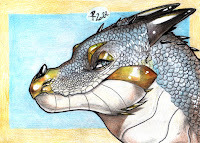 +++++
+++++++++ ++++++
🌵🎨 All the drawings in this page (and probably in all the other pages, if not differently specified) were realized by our artists, Furiarossa e Mimma. You can see more of their works and support them on their Patreon page. Become patrons of the arts! 🌵🎨
September 12, 2022
Draghi angelo
(Did you get lost, wanderer? If you're looking for this page in English, you will find it HERE once it's finished!)
Draghi angelo
(Verusdraco sapiens alba x aurea)
 I draghi angelo nascono dall'incrocio tra un drago bianco e un drago dorato maggiore.L'ibridazione tra queste due razze è avvenuta un numero sufficiente di volte da assicurare a questo incrocio un nome, testimonianze e persino luoghi comuni che lo riguardano; tuttavia, essendo tutti i draghi angelo praticamente sterili, la loro non è considerabile una sottospecie a sé stante.Il termine "drago angelo" gli è stato attribuito sia in riferimento alla livrea chiare, che spesso contiene bianco ed oro in abbondanza, sia al carattere voluto dall'immaginario come protettivo, bonario e dotato di un forte senso morale.La prima volta che la parola "drago angelo" è stata usata riferendosi esplicitamente a questo tipo di drago è stato in un testo del 1280 (nel Bestiarium Raritatis, "Il Bestiario delle Rarità", un tomo in latino di cui l'unica copia rimasta si trova nella cittadina di Bareblia), ma vi sono sporadiche descrizioni antecedenti in certi racconti draconici che potrebbero riferirsi proprio ai draghi angelo, testimoniandone l'esistenza anche da prima che gli fosse attribuito un nome.
I draghi angelo nascono dall'incrocio tra un drago bianco e un drago dorato maggiore.L'ibridazione tra queste due razze è avvenuta un numero sufficiente di volte da assicurare a questo incrocio un nome, testimonianze e persino luoghi comuni che lo riguardano; tuttavia, essendo tutti i draghi angelo praticamente sterili, la loro non è considerabile una sottospecie a sé stante.Il termine "drago angelo" gli è stato attribuito sia in riferimento alla livrea chiare, che spesso contiene bianco ed oro in abbondanza, sia al carattere voluto dall'immaginario come protettivo, bonario e dotato di un forte senso morale.La prima volta che la parola "drago angelo" è stata usata riferendosi esplicitamente a questo tipo di drago è stato in un testo del 1280 (nel Bestiarium Raritatis, "Il Bestiario delle Rarità", un tomo in latino di cui l'unica copia rimasta si trova nella cittadina di Bareblia), ma vi sono sporadiche descrizioni antecedenti in certi racconti draconici che potrebbero riferirsi proprio ai draghi angelo, testimoniandone l'esistenza anche da prima che gli fosse attribuito un nome.Aspetto
I draghi angelo sono draghi di taglia da media a medio-grande, che possono comprendere nella loro livrea il bianco, l'azzurro, il color pesca e il dorato.
Il loro aspetto raramente dà un'impressione di omogeneità: spesso presentano aree di colore diverse che spiccano sulle altre, alcune più opache ed altre più metallizzate, un fisico più massiccio in alcuni punti e più leggero in altri (in particolare, spesso ereditano la coda sottile dei draghi bianchi). Nonostante in molti casi questo non gli doni un aspetto elegante o particolarmente mimetico, sono generalmente considerati creature molto belle proprio per la complessità del loro aspetto. Costituzione, taglia ed aspetto sono discretamente variabili da un esemplare all'altro, dettati dal mix genetico che ereditano dai genitori, anche se prendono frequentemente il metabolismo lento dei draghi dorati e la loro tendenza ad accumulare grasso ed acqua nei tessuti.Hanno squame dal bordo tondo, flessibili e resistenti; la pelle sottostante è color fegato o marrone chiaro, talvolta maculata di gradazioni più chiare come rosa e sabbia.La loro schiena è percorsa da una fila di punte cornee affilate, e talvolta un numero variabile di punte orna le guance, i garretti o l'attaccatura del collo. Le corna nere sul capo sono dritte e appuntite, e si prolungano dietro al capo seguendo la linea della fronte.Possono avere un piccolo corno fra le narici, più o meno sviluppato: talvolta si tratta semplicemente di una placca scura. Artigli, corna e spine sono generalmente nere o brune, con rare eccezioni che contemplano l'oro, e sono lisce, affilate e senza nodi.
Gli occhi dei draghi angelo, descritti nel Bestiario delle Rarità come "intelligenti, anche in maniera furbesca, ma benevoli", sono sempre azzurri o dorati.Hanno ossa cave ed ali generalmente molto grandi, che li rendono in grado di notevoli scatti aerei, con uno o due uncini cornei sulla sommità.
Vista la variabilità degli esemplari è molto difficile individuare un dimorfismo sessuale, se non nel fatto che le femmine tendono a raggiungere peso e taglia maggiori delle loro controparti maschili; il record per l'altezza massima registrata da un drago angelo va infatti ad una femmina, chiamata Roclippì, che misurava esattamente sette metri ed aveva un'apertura alare di ben ventotto metri, per un peso di poco superiore alle cinque tonnellate.Le orecchie non possiedono padiglione ed il timpano è protetto solo dall'auroscala, una squama traslucida modificata che impedisce al timpano di vibrare troppo durante il volo e di sporcarsi. I draghi angelo hanno spesso denti parzialmente differenziati, come i draghi dorati maggiori, ma il mix con la genetica dei draghi bianchi sembra portare un accento particolare sui canini, che in alcuni esemplari sono particolarmente vistosi.
Il fuoco dei draghi angelo generalmente è rosa o giallo pallido; alcuni esemplari sono anche in grado di produrre una saliva densa e appiccicosa come colla.
ComportamentoI draghi angelo sono creature spiccatamente sociali, capaci di interiorizzare in fretta i modi di fare di specie diverse dalla propria ed usare fluentemente questo nuovo "linguaggio" nell'interagire con loro. Amano la compagnia e la loro memoria ferrea consente loro di ricordare facilmente nomi ed informazioni, cosa che li avvantaggia anche nell'apprendere altre lingue.Quando vengono cresciuti con cura e affetto, è per loro molto naturale stabilire un contatto empatico con animali, draghi di altre specie ed esseri umani; anche per questo, quasi tutti i draghi angelo di cui si hanno testimonianze si sono legati almeno ad un essere umano, accettandolo come loro dragoniere.
Generalmente sono draghi solari ed equilibrati, compassionevoli ed intelligenti, che hanno però una grande debolezza: la suscettibilità alla bramosia dell'oro.Amano collezionare libri e pietre preziose, di cui fanno veri e propri tesori personali nascosti e di cui sono molto gelosi, ma l'oro ha una presa speciale su di loro: la sua sola presenza li rende esaltati, bramosi, ragione per cui buona parte dei draghi angelo tendono ad evitare di entrarvi in contatto.Nei casi più gravi, se un drago angelo è riuscito a mettere di lato una fortuna in oro e si trova in un momento di particolare fragilità psicologica, la situazione può degenerare in una psicosi vera e propria, per cui l'individuo tenderà ad isolarsi da tutti gli altri e vivere nelle proprie stanze del tesoro, nella convinzione di dover difendere il proprio bottino da tutto e tutti o ne sarà derubato.Nonostante siano considerati draghi buoni e saggi, è anche per questo loro lato impulsivo che non riescono mai ad occupare alte cariche politiche tra i draghi, che richiedono di dimostrare forte disciplina ed autocontrollo. Nascita e crescita I cuccioli di drago angelo nascono da uova, che vanno incubate per un periodo variabile dalle due settimane ai due mesi.Se non vengono adeguatamente scaldate, queste uova possono rimanere quiescenti anche per centinaia di anni prima di schiudersi.
Le uova da cui nasceranno i piccoli draghi angelo hanno generalmente l'aspetto di un comune uovo della specie della madre (se la mamma è un drago dorato avrà l'aspetto di un "formaggione", un uovo di drago dorato, se invece la mamma è un drago bianco sarà tale e quale ad un normale uovo della sua specie), ma se la madre è un drago bianco la differenza diventa palese dal fatto che il piccolo non necessita della presenza dell'umano a cui si legherà per schiudere.Alla schiusa i piccoli draghi angelo hanno uno speciale dente di cheratina, che cade poco dopo la nascita, con cui si aiutano ad aprire il guscio dell'uovo da cui usciranno. I cuccioli neonati pesano dai 500 ai 900 grammi, e sono già attivi e curiosi, pronti ad esplorare il mondo.I draghi angelo sono mediamente lenti a crescere, per cui raggiungono la piena maturità e la capacità di riprodursi intorno ai sedici anni. A questo punto alcuni esemplari rallentano considerevolmente il loro ritmo di crescita, fin quasi a fermarsi, mentre altri rallentano leggermente ma proseguono fino al raggiungimento del peso massimo, che si aggira attorno alle cinque tonnellate.Da quel momento in poi continueranno comunque a crescere, ma in maniera tanto lenta da essere impercettibile se non da un millennio all'altro.
Come tutti i draghi sono estremamente longevi, tanto che nessun drago angelo è mai morto di vecchiaia.
Vita sociale e corteggiamento
È estremamente raro che un drago angelo riesca ad interagire con un altro drago angelo, soprattutto nei primi anni di vita, quindi i primi insegnamenti riguardo la moralità, religione e gerarchia gli saranno impartiti dalla famiglia di appartenenza in cui crescerà... che sia una specie adottiva, l'eccentrica, rumorosa cultura familiare dei draghi dorati o l'educazione morale ed accademica dei draghi bianchi.Tutti i draghi angelo sono sterili; alcuni non provano neppure l'impulso di riprodursi e non si lasciano coinvolgere nei corteggiamenti, altri si accoppiano a scopo ricreativo, specie se cresciuti in comunità di draghi dorati, ma una volta scoperta la propria infertilità di solito si dedicano a tali attività solo al di fuori del periodo riproduttivo.
Habitat e dieta I draghi angelo si adattano facilmente sia al caldo che al freddo, e sembrano avere una predilezione per coste ed isole, stabilendo le loro tane dentro grotte o cave di marmo non molto distanti dal mare a dispetto del fatto che né i dorati maggiori né i bianchi vivono di solito in simili habitat. I draghi angelo amano il cibo, e sono onnivori a prevalenza carnivora. Si nutrono principalmente di pesce e carne, ma non disdegnano quasi nessun tipo di alimento; amano i cibi grassi come avocado e frutta secca, che consumano però principalmente da cuccioli vista la taglia esigua di questi alimenti rispetto alla loro stazza da adulti.Tendono a non uccidere nessuna creatura che reputano particolarmente intelligente, tra cui polpi, umani e delfini, di cui possono comunque nutrirsi nel caso ne trovassero cadaveri freschi. Se cresciuti da draghi bianchi, ne ereditano il tabù che impedisce di nutrirsi di esseri umani in qualunque caso.
Esemplari famosi RoclippìAtrebor
Curiosità
Alcuni attribuiscono un'aura mistica ai draghi angelo, dovuta al loro aspetto ed alla loro rarità, per cui, anche se sono spesso esclusi da ruoli politici particolarmente prestigiosi, se lo desiderano ottengono facilmente cariche religiose.
Galleria d'immagini (Clicca per ingrandire!)
 +++++
+++++++++ ++++++
🌵🎨Tutti i disegni in questa pagina (e molto probabilmente anche in tutte le altre pagine, se non diversamente specificato) sono stati realizzati dalle nostre artiste, Furiarossa e Mimma. Potete vedere altri loro lavori e/o supportarle (e supportare così anche tutti i Cactus di Fuoco ;)) sulla loro pagina Patreon. Diventate patroni delle arti!🌵🎨
September 4, 2022
Characters - September Aster
(Ti sei perso, viaggiatore? Se stai cercando questa pagina in italiano, puoi trovarla QUI)
Species: Human (Homo sapiens sapiens)
Complete name: September Mattia AsterGender: Male (He/him)
Height/Weight: 1,65 m / 63 kgBody type: Just a little chubby
Occupation: Alchemist, adventurerSmells like: Musk, marshmallow and burnt amber, with an hint of pineconese
S.O.: Heterosexual
Birth date | Zodiac sign: September the 22nd | Libra, ascendant LeoHometown: somewhere in the USA, but his family comes from England and his main residence Is now in Sicily, Italy
Appears in: Co-protagonist in the book Urban Legends, but he also appears in the collection of short stories Quello che i Cactus raccontarono.
+++ September's Playlist on Spotify +++ Chaotic neutral | Wizard | Roamer His plans are always crap | Cute potato adventurer | Trouble on chubby legs | Incredible wizard | Wanderlusting "Now that I found your love
I could never let you down
Even when the times get rough
Nothing's gonna stop us now
We'll grow old
And we'll never be alone
And no matter where we roam
We'll be glorious
We'll be glorious and you know it's true"
"Glorious"- Adam Friedman
September is a powerful, eccentric young mage that loves traveling (mainly by feet), adventures, ancient ballads, fulfilling magical deeds and taming untameable beasts. He loves to learn and experiment; his morality may be a bit grey and ambiguous, but his gentleman's manners and his enthusiasm make him adorable. He loves to impress others and has a flair for acting and "drama". His main talents reside in illusionism, alchemy and hypnosis.
September makes a great friend, since he's loyal, a nice cook and a disgustingly rich person that has the bad habit of spending and squandering his money too easily. Even if he loves to have a comfortable "nest" to come back to, he can't resist the call of living la Vida loca and finding new, dangerous challenges to face.
He grew up in a war zone, even if he'd really rather not talk about it. September descends from a long bloodline of magicians, that is said to come from the famous wizard Merlin himself, and the Aster family members are usually referred to as "The Kings' counselors". He started his education as a wizard at an early age, following a renowned mentor together with Paul Hersen and Mefisto Calabrò and then moving on to research alone, maintaining friendly relationship with the two. Shortly after leaving their teacher, both he and Paul managed to (inadvertently) self-curse and ruin their own lives.
September imparted The Curse of the Beast on himself, a terrible spell that forces the victim to painfully turn into a feral creature every night and lose control of their own body. While traveling to try to get rid of this curse (which he later managed to break in the Village of the Sun, in Sicily) he met his favorite adventure companion. And the most incredible of his adventures really started...
September has a black and white female pet rabbit called "Mamma Coniglia" (it means Mother Rabbit in Italian), that his friend Furiadoro once found abandoned and pregnant and gifted to him.
He speaks fluently both English and Italian, and understands Latin and Ancient Greek pretty well.
His kind of magic is called balanced or grey magic. He can draw from any element of the pentacle in almost any combination except for the Earth element, but he's not particularly inclined towards any of them. To achieve such balance is a pretty rare feat among his fellows, that requires at least double the work of an "elemental" to achieve the same mastering of their own powers. For this reason, reaching September's level of skill is even more astonishing; it's possible for the grey magicians to achieve incantations impossible to others and be facilitated in certain tasks, such as the opening of portals and "street magic", executed without instruments.
Among the spells with "visible evidence", he mainly uses convoy and manipulation techniques taken from light or water magic, so the light that shines through is usually white or light blue.
He's Furiadoro's co-protagonist in the book Urban Legends, but he also appears in the collection of short stories Quello che i Cactus raccontarono (both works are in Italian).
Notes of style:He has the tattoo of a Celtic cross on his forehead, that was traced when he was still a baby.
Set is quite the chilly guy, so he often wears warm, colorful clothes; he has a favorite lucky scarf, soft and striped with red and golden. The color combinations he fancies in fashion matters sometimes are... questionable, especially because he loves very vivid ones, but he knows how to dress elegantly if needed.
He has a big curved scar above his right hip and three for shoulder: white, long and thin, almost invisible, left by the talons of a Nosfertatu vampire.
He likes He dislikes❤ Dungeons
❤ Poetry
❤ Witchcraft and magic studies
❤ Board games
❤ Bunnies
❤ Books (The Harry Potter saga and Geronimo Stilton in particular)
❤ Traveling with his friends
❤ Scarfs
❤ Folk music
❤ Strawberries and pineapple
❤ Very dangerous and unstable creatures
❤ Colorful swimwear
💔 Boxe
💔 Hunting
💔 Slaughter of human beings, human wars included
💔 Bad cooking
💔 Being unimpressive
💔 His name being shortened as "Sep".
Set is the correct form, according to him.
💔 Most undead creatures
💔 Eldritch dark magic
💔 Eating raw potatoes
Skills
[Possible levels: disaster | beginner | mediocre | good | very good | excellent | master] Physical- Walking for long distances (very good/excellent)
- Hearing at great distances (mediocre)
- Smell (good)
- Fencing (mediocre/good)
- Wrestling (mediocre)
- Standing fight / boxing (mediocre/good)
- Pain resistance (very good)
- Running (good)
- Archery (good)Language
- US English (very good in written and spoken, excellent in understanding)
- Italian (very good in written and spoken, excellent in understanding)
- German (good)Music
- Guitar (good)
- Drums (mediocre)
- Piano (good)
- Singing (good/very good)
- Recoreder flute (very good)
Magical- Creating light globes (very good/master)
- Creating magic sygils (very good)
- Creating mental illusions with his voice (master)
- Creating simple illustrations with magical gesture (very good)
-
-
-
-
-
-
-
-
Misc.- Cooking (good/very good)
- Sewing (good)
- Hunting small animals (very good/excellent)
- Intimidate the opponent (excellent)
- Learn quickly (very good)
- Orienting in forests (very good)
- Orienting in cities (excellent)
- Shooting with guns (very good)
- Planning murders (very good)
- Video editing (very good)
- Hacking (beginner)
Moodboard
-
Gallery of images (Click to enlarge!)
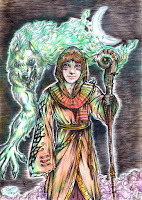
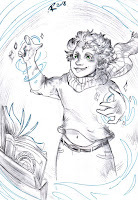
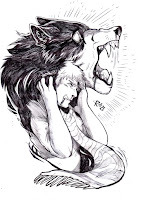

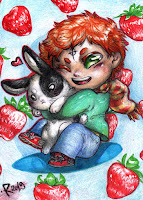
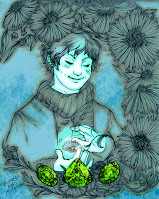
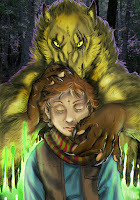
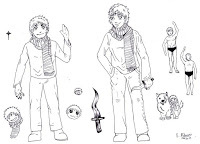

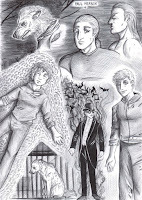 September, Vlad, Furia and Paul Hersen
September, Vlad, Furia and Paul Hersen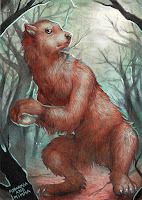 Cursed beast form
Cursed beast form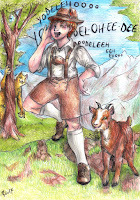
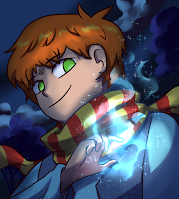 by kmdk13
by kmdk13
 by Lazy-perfs
by Lazy-perfs
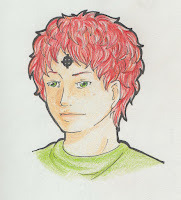 by amaerise
by amaerise
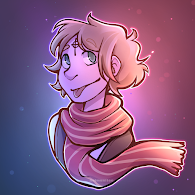 by Animunitee
by Animunitee
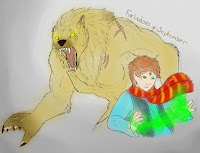 by Aria-suna-kunoichi
by Aria-suna-kunoichi
 by rikise
by rikise
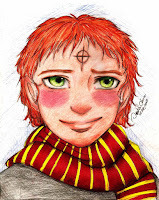 by DeskaChan
by DeskaChan by RoyGribbleston
by RoyGribbleston
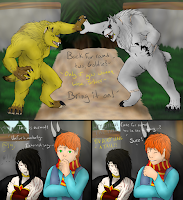 By AriaSunaKunoichi
By AriaSunaKunoichi
 by Xxrosethestormxx
by Xxrosethestormxx

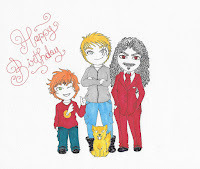 by SarottinaDeliriums
by SarottinaDeliriums by SarottinaDeliriums
by SarottinaDeliriums
 by AbbyPaintbrush
by AbbyPaintbrush

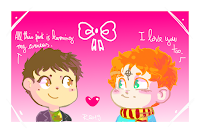 With Francesca Harker
With Francesca Harker+
++++
++
+
+++
All the drawings in this page (e probably in all the other pages, if not differently specified) were realized by our artists, Furiarossa e Mimma. You can see more of their works and support them on their Patreon page. Become patrons of the arts!
September 1, 2022
Agosto 2022 - Cosa abbiamo creato?
Sara's fitness blog (webcomic)
Carnalis (webcomic)
Page 2 |
Commissions
Mousepaw | Samantha on the World (black and white) | The pirate (black and white) | Gullpaw | Sabertooth (black and white) | Devoured and deposed 6 | The Pirate | Sabertoot bicep | Sabertooth power (black and white) | Spirit of a warrior | Side by side | The Hunt |
Patrons Only! Strong sabertooth (WIP) | Coastal dragon + Gray dragon (WIP) | Sabertooth tiger (WIP) | The Pirate [pack for patrons] | Sabertooth bicep [pack for patrons] | Hunt (WIP) | Hunt 2 (WIP) | Supernatural battle (WIP) | Eating adventurers (WIP) | Spirit of a warrior [Pack for patrons] | Side by side hissing (WIP) | Gargoyle family (WIP) |
+++SCRITTURA+++
L'Inverno delle Rose
Prologo |
Deus Ex Machina
33. Il mostro sotto l'opera | 34. La fusione | Epilogo |
Recensioni
Novecento (Alessandro Baricco) |Blog posts
ICDL illustrazioni - Penna a sfera 3 | Le più esilaranti immagini stock [parte 1] |RaccontiBad Bitch Bites Back |
+ Altro +
Allora, che ve ne pare? Siamo stati bravi? Supportateci su Patreon e aiutateci a creare cose ancora migliori e ad ampliare il nostro mondo!
August 30, 2022
Gray dragons
(Hai perso la strada, viandante? Se stai cercando questa pagina in italiano, puoi trovarla QUI!)
Gray dragons
Origins
Gray dragons are a fairly ancient race, so much so that they're supposed to have been the first race to write down the extremely complex and guttural sounds of ancient draconic, transforming and creating some grammar rules for it. We owe to a gray dragoness, Andoraaal, the writing of the oldest Draconic literary work, The Myth of the Dragonixius (Tihodohor dok Draconi Graxius), transposition of one of the oral myths created by the now extinct race of the marble dragons.Some primitive findings of gray dragons remains occurred on the Andes, in particular the remains of two camps similar to proto-cities were found in the Patagonian Andes, one in Chile and the other in Argentina.Anyway, the appearance of gray dragons on Earth precedes that of the Homo sapiens sapiens and is considered by many experts vital to the forging of the relationship of dragonery. It's not known with certainty which races contributed to the creation of gray dragons; it's supposed that it could be the convergence of four or five ancient races that are now completely fused and extinct, if not for this form.

Appearance
Gray dragons ara average-sized, which, how the name suggest, appear gray in color. Their scales, rhomboid in shape but tiny and compact, have an opaque coloration, and the resulting effect of this is that their lean and muscular physique look covered in stone. When they stay completely still, especially if balled up, their resemblance to rocks is impressive; an ability that allows them to perfectly blend in the rocky plateaus, even hiding to human eyesGray dragons rarely have the typical flat and wide scales on the belly, also known as "ventral armor", which distinguish many dragon races, but more often they exhibit a homogeneous surface of small scales on both the dorsal and the ventral part They have no horns to ornate their head, althought they present a small conic horn at the end of their nasal bridge, slightly over the nostrils, and these characteristics combined (the gray skin, the absence of horns on their head, the nasal horn) make them resemble, even if not closely, rhinos.
There's a single row of black keratin horns on their back, not particularly big.
Their skin, if deprived of scales, is gray, sometimes decorated by dark blue spots.
The eyes, small but expressive, always have light-colored irises, among which the most common are green and gray. Gray dragons have visible, mobile auricles, with a pointy tip, that got them also the nickname "wolf dragons". Some individuals have two tiny meaty whiskers, similar to those of carps, on their upper lip, but the use of this decorations is unknown.
The maximum height ever reached by a gray dragon is of four meters and seventeen centimeters (thirteen comma seven feet), with a wingspan of ten meters and forty-one centimeters (a little over thirty-four feet). They're good fliers.
Their tail is willowy and muscular, with the ending part that gets thinner and always culminates in a dark gray or black keratin arrow, which gray dragons often sharpen and use to cut meat or cut down trees.
Their fire is orange-red. These dragons have the habit of spitting small amounts of fire inside their own mouth and warm up their saliva, which is dense, much more so than other dragons', and if it makes contact with fire for a couple minutes it will become incandescent and similar to fluid magma. When a gray dragon is angry, it can happen that they unknowingly start warming great quantities of saliva and drooling, giving the impression of pouring lava from their mouth, and it's best not to get too close to avoid being burnt.
Behavior
Gray dragons are considered by many a "basic" dragon regarding to behavior: nor religious fanatics nor completely godless, nor detached and cold nor completely feral or ruthless, clever and curious without being prey to a knowledge craving. Even the gold greed, which makes other dragons go crazy and unapproachable, only has a bland effect on them.
They often seek the company of white dragons, with which they share an important sense of justice, altough not as extreme, other than the love for mountain environments. What is unknown to many of these dragons, instead, is the destructive intensity of their ire: incredibly hard as it is to be witness to it, since gray dragons have a great patience, when their endurance ends they transform into terrifying war machines barely able to control themselves. During a typical rage episode, it happens that steam cloud, caused by the evaporation of a part of the liquid in their saliva, lift from their mouths, the air trembles around their nostrils reddened by fire, and the rest of their saliva, dense, viscous and now incandescent falls from their open jaws, passing through their displayed teeth and sizzling when it touches the ground, the breathing becomes hoarse and hissing, the voice deeper, the muscle efficiency increases as it does the possibility of accidental realease of destructive magic.Paradoxically, it seems that human have been acknowledging this altered state of gray dragons more than other dragons: in several written documents it's narrated of the leggendary destructive fury that these creatures are able to unleas, destroying entire cities.
Birth and growth
Gray dragon hatchlings are born from eggs that are incubated inside stone nests, lined inside with animal pelts, that get heated with fire untile they're incandescent and can slowly release heat. Gray dragon eggs are robust, incredibly hard to break, and have an irregual look that can remind of a big gray pebble, often mottled in irregular cream and black patterns. In a cold environment they can remain dormant for one or two hundred years, but if exposed to heat they hatch (if temperatures are over forty Celsius degrees) or tend to mould (at temperature between twenty and thirty-nince Celsius degrees), killing the hatchling. The transport of gray dragon eggs isn't recommended for those who are not experts.
A particularity tipical of gray dragon is that the size of the eggs or the newborn dragon aren't linked at all to the size of the mother; instead, they're standard: nine hundred grams. Bigger females lay more eggs (to a maximum of seven), but all of the same size, once every nine-ten years.Mothers tend to care little or none at all for their offspring, limiting themselves to protecting the territory in which the baby dragons grow up and inviting them to get out and search for their own independence when they're ready to hunt on their own. Babies learn everything that will be useful for their survival through the observation of their mothers, but it can happen that some of them will be adopted instead by white dragons and formally educated to the use of magic, an art in which they're especially well-versed.
Gray dragons are fairly slow to grow, and reach the ability to reproduce once they have thirty years, but the complete maturation of their body, with strong muscles and the full definitive dentition, will only come at one hundred years.
Social life and courtship
Gray dragons aren't among the most social of dragons, and they live in small territories of around forty-sixty square kilometers, which they call "houses", and from which they tend not to go out too much, being one of the few dragon races that farm cattles, other than being, of course, hunters and gatherers. A series of houses close to each other creates a camp, which the maximum of sociality for them: it's moving inside it, through the territory of other gray dragons that are friendly with them, that they find their reproductive partners.Males don't actively court females, but they take care to always be handsome and well-groomed: strong muscles, a lean and fit body, ornaments and patterns make them more noticeable. Oratory and personal pleasantness are two other characteristics that strongly incide on the choice of a partner.Sexual dimorphism, on the contrary of what happens in many other races, isn't particularly definite: females are only slightly bigger than males, and they don't have different colors.
They don't really have a reproductive period.It rarely happens that these dragons mate with specimens of other races, giving birth to hybrid dragons that almost always look like gray dragons, which genetics is surprisingly dominant.
Habitat and dietGray dragons can live a bit anywhere, from plains to deserts, but their places of choise are without a doubt the plateaus, especially those hidden and surrounded by other mountains, like the one of Tibet. They're omnivores and feed on livestock (especially goats) that they farm themselves, other than deers, ibex, chamois, roe deers, eggs, wild fruit of many kinds (in particular, despite the exiguous size compared to that of their body, they really love blackberries), roots, and leaves. Worth noting their habit of chewing on moss to clean their teeth and perfume their breath.It isn't considered a social taboo for gray dragons to feed on humans, although it is to kill them with a hunting purpose, so they often don't put off the idea of feeding on human corpses, if they happen to casually find them.
Famous gray dragons
Artenair
Trivia Numerically, gray dragons are among those more frequently chosen as rulers by other dragons, second only to white dragons. p { margin-bottom: 0.21cm; background: transparent }a:link { color: #000080; so-language: zxx; text-decoration: underline }
Image gallery (Click to enlarge!)
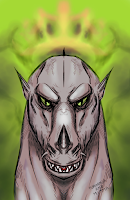
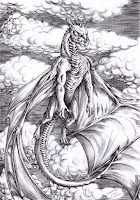 Rare specimen with ventral armor
Rare specimen with ventral armor+++
++++ ++++++++++++
🌵🎨 All the drawings in this page (and probably in all the other pages, if not differently specified) were realized by our artists, Furiarossa e Mimma. You can see more of their works and support them on their Patreon page. Become patrons of the arts! 🌵🎨
Characters - Stelvio
(Hai perso la strada, viandante? Se stai cercando questa pagina in italiano, potrai trovarla QUI appena sarà pronta!)

Species: Domestic cat (Felis catus)
Gender: Female
Weight: 4 kg
Body Type: Long female boi
Birth date: 10/10/2015
Zodiac sign: LibraAge at first appearance: Two months and a half
Occupation: Webstar
Nicknames: Strivio, Baguette, Brioche, Trudinop { margin-bottom: 0.25cm; line-height: 115% }Smells like: Pillow covers and milk brioche Comes from: Italy
Appears in: Two Red Cats (webcomic)
Coward
Noisy
Pacifist
Lazy
Antisocial (sometimes)
Affectionate (some other times)
Neutral Good | Long cat | Make peace, and only that: zero effort policy
Stelvio is the lazy half of the dynamic duo protagonist of the webcomic Two Red Cats along with her co-star, Lily.
Stelvio was found in late autumn in a car engine, adopted and cared for in the countryside by her new family. She's a trusting, docile cat that loves to climb high trees like a squirrel, nap in the sun, ignore the classy, expensive food and eat dirty bugs instead, and emit cute noises.
She's both Lily side-kick friend and her punching bag.
Stelvio can be really moody and be an anarchic, anti-social creature one moment and a cuddly, active, sweet kitten the other. She's good-natured, tolerant, and friendly towards everyone, but not always patient. If she loses her patience, however, she doesn't get angry but just leaves to find refuge on a tree.
She's a pacifist and, given the chance, she always flights instead of fighting.
Related to
► Friend, punching bag of, and raised by Lily.
▻ Friend and occasional victim of ghostly possessions by Vitali.
► Friend of the protective Maremma sheepdog Lucha and the rebel cat Mio
▻ Sort of aunt for Lily's kittens, of which her favorite was Marvel. Notes of style:
She's a sweet brioche.
Trivia
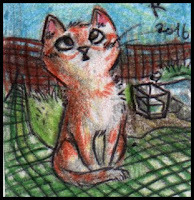 People sometimes refer to her as "him" because of a little gender recognition mistake since when she was a kitten (and habit of force since then), but she's a female.She sometimes allows the ghost kitty Vitali to inhabit her body to eat chicken. In exchange, he blesses her with health and beauty.
People sometimes refer to her as "him" because of a little gender recognition mistake since when she was a kitten (and habit of force since then), but she's a female.She sometimes allows the ghost kitty Vitali to inhabit her body to eat chicken. In exchange, he blesses her with health and beauty.She only know one trick, which is to give the paw after a complicated verse gets declaimed: "Stelvio mendicante, dammi la zampa se vuoi il croccante" (Beggar Stelvio, give me the paw if you want the kibble).She has delicate nerves, and throws up easily if startled. She also suffers from epilepsy.
She befriends any kind of animal, no matter their species: lizards, birds, mice, dogs, other cats, humans. She just doesn't care.
Moodboard

Likes Dislikes❤ Resting❤ Eating bugs
❤ Chatting loudly
❤ Doing things suddenly and without purpose
❤ Climbing
💔 Collars and harnesses
💔 Chaos💔 Fights
Skills[Possible levels: disaster | beginner | mediocre | good | very good | excellent | master]
Physical- Sight in low light conditions (very good)
- Hearing (very good)
- Smell (very good)
- Fighting (disaster/beginner)
- Pain resistance (beginner)
- Running (very good)
- Balance (very good/excellent)
- Climbing (excellent)
- Resistance to side effects of medicines (beginner/mediocre) Language
- Italian (disaster in speaking and writing, beginner in understanding)
- Cat language (very good/excellent)
Music
- Musical meows (good)
Magic- Interacting and perceiving supernatural presences (very good/excellent)
- Banishing spirits (very good)
Misc.
- Performing tricks on command (beginner)
- Patience (good)
- Dealing with car trips (good)
- Making friends (very good)
- Leash training (very good)
- Hunting (good)
- Ability to orient herself (beginner/good)
- Resistance to the effects of valerian and catnip (excellent/master)
Galleria di immagini (Clicca per ingrandire!)

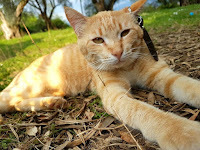
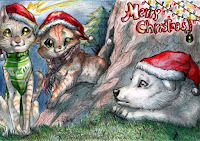 Merry Christmas with Lily and Lucha
Merry Christmas with Lily and Lucha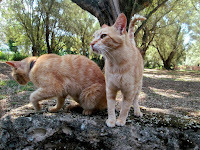 Real Stelvio with Lily
Real Stelvio with Lily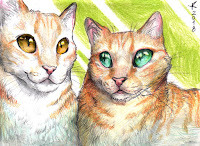 With Lily
With Lily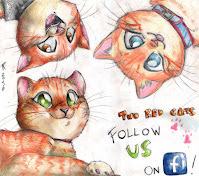 With Lily and Vitali
With Lily and Vitali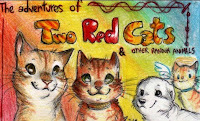 Webcomic header with Lily, Lucha and Vitali
Webcomic header with Lily, Lucha and Vitali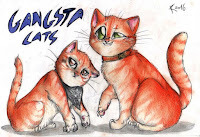 Baby Stelvio with Lily
Baby Stelvio with Lily Sketch for human version
Sketch for human version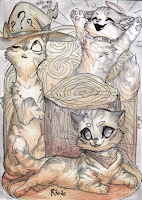 Autumnal, with Lily and Vitali
Autumnal, with Lily and Vitali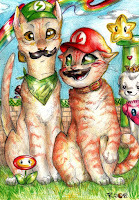 With Lily and Lucha, Super Mario version
With Lily and Lucha, Super Mario version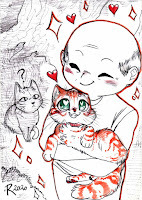 Perplexedly looking at Lily and Dad
Perplexedly looking at Lily and Dad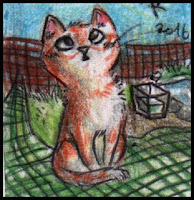
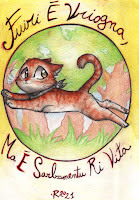
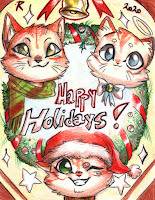 Happy Holidays with Lily and Vitali
Happy Holidays with Lily and Vitali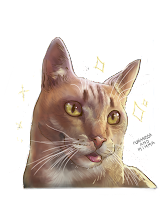 Blep
Blep Baby Stelvio at the vet
Baby Stelvio at the vet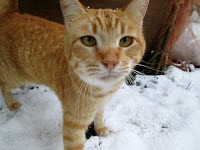
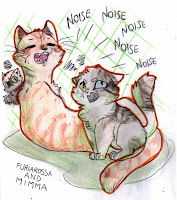 With Lily, in an interaction Artfight attack
With Lily, in an interaction Artfight attack By Aria-Suna-Kunoichi
By Aria-Suna-Kunoichi Facebook header
Facebook header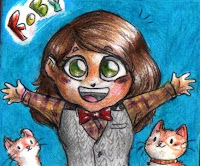 With Lily and The Author
With Lily and The Author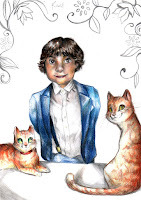 With The Author's cousin, Alessandro
With The Author's cousin, Alessandro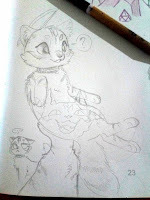 Peeking through Vitali, with Lily
Peeking through Vitali, with Lily With The Artists, Lily, and Dad
With The Artists, Lily, and Dad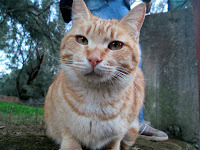
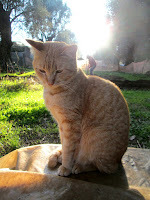 Colonna 1Colonna 2colonna 3 🌵🎨 All the drawings in this page (and probably in all the other pages, if not differently specified) were realized by our artists, Furiarossa e Mimma. You can see more of their works and support them on their Patreon page. Become patrons of the arts! 🎨🌵
Colonna 1Colonna 2colonna 3 🌵🎨 All the drawings in this page (and probably in all the other pages, if not differently specified) were realized by our artists, Furiarossa e Mimma. You can see more of their works and support them on their Patreon page. Become patrons of the arts! 🎨🌵
August 24, 2022
Personaggi - Anya Philippus
(Did you get lost, wanderer? if you're looking for this page in English, you can find it HERE!)

Specie: Nuova umana (Homo sapiens excitavit)Nome completo: Anya Philippus
Genere: Donna
Altezza/Peso: 1,72 m / ?? kgCorporatura: Abbastanza magra, ma non debole o fragile. Atletica.
Età alla prima apparizione: 20 anni
Segno zodiacale: Cancro ascendente Ariete
Occupazione: Supereroina professionista, cantante, influencerOrientamento sessuale: Eterosessuale
Conosciuta anche come: Pale Horsep { margin-bottom: 0.25cm; line-height: 115% }Odora di: Energy drink al lime, amarena, vaniglia, sudore, zucchero, tessuto sintetico p { margin-bottom: 0.25cm; line-height: 115% }Nazionalità: USA
Appare in: Shadowfawn (libro) | Impertinente
LealeCoraggiosaUn po' vanitosa
Tendente alle dipendenze
Sboccata

È un personaggio del libro "Shadowfan - La ragazza ipnotica", che potete leggere qui: Wattpad (prima stesura) | Amazon (e-book o cartaceo) | Kobo (solo e-book)
MutaformaPuò cambiare aspetto, ma solo se... è suo fratello a volerlo! Il suo corpo si adatta alla volontà del fratello Valder e viceversa, così che i due possono trasformarsi a vicenda. Ad ogni modo, ha una flessibiltà limitata e non può trasformarsi in cose che sono un po' troppo più grandi o piccole di lei. A seconda delle sue condizioni fisiche, può spingersi a prendere forme sempre più estreme, come quelle animali, altrimenti deve limitarsi ad imitare altri esseri umani. She sotto l'influsso di particolari droghe (come l'infame One Cup) la sua flessibiltà di trasformazione aumenta grandemente, e può anche aiutare il fratello a trasformarsi più facilmente. Anya&Valder Anya è particolarmente affezionata al fratello Valder e i due sono quasi sempre insieme. È molto difficile vederli senza l'altro! Anche se bisticciano continuamente e sembra che non si sopportino, in realtà sacrificherebbero (quasi) tutto per vedere l'altro felice. Ehi, e questo è un segreto, ma... sono persino innamorati della stessa persona! Ragazzi ragazzi ragazzi Anya ha una passione per i ragazzi. Le piacciono loro, le loro facce, le loro voci, i movimenti, la barba, i peli sul petto... ed è molto, molto facile per lei prendersi una cotta per un ragazzo. A volte è così accecata dal loro aspetto da accompagarsi a dei tipi davvero poco raccomandabili... ugh, ha così tante storie di ex tremendi da raccontare!Le piace parlare agli uomini, ma anche prenderli in giro, farci la lotta, giocarci o anche solo guardarci un bel film assieme. Non è sempre attrazione fisica o sessuale, ma le piacciono anche solo come amici. Ed il suo ideale perfetto di mascolinità, quello che le piace più di chiunque altro, è Mister Storm, il suo mentore! Lo adora. Cantante, influencer, eroinaAnya è una cantante ed and influencer, ma il suo lavoro principale è quello di super. Sì, una vera supereroina! Insieme al fratello Valder, è una degli assistenti di Death Rider. Da sola, Anya non è una super particolarmente potente, ma insieme agli altri due è abbastanza forte e rispettata nel mondo dei supereroi! Ovviamente non è una degli eroi più popolari, e non ci sono dati ufficiali sulle sue vittime e catture (il suo lavoro, insieme a quello di Valder e Death Rider, è confidenziale e molto ben nascosto dalle autorità), ma a lei non importa: essere famosa sui social network è abbastanza per un'eroina giovane e vanitosa come lei. E lavorare con Death Rider, proteggerlo, è un sogno per lei!Un'altra cosa che le piace? Accoltellare la gente. Davvero, accoltellerebbe chiunque avendone il permesso, a volte persino gente che le piace (ovviamente non in maniera letale).
TRIVIA
► In futuro sarà imparentata con un certo Michelito...► Sia lei che il fratello utilizzano il proprio potere per mantenere un aspetto giovanile a prescindere dalla loro reale età.
Note di "stile":
Il suo canino sinistro è fatto d'oro. Indossa spesso girocollo e collari.
Moodboard+
Le piace
Non le piace
❤ Distruggere oggetti e persone (🔪)
❤ Rilassarsi con le uniche due persone di cui le importi al mondo (Suo fratello Valder e Mr. Storm)
❤ Videogames
❤ Sushi
❤ Il suo canino d'oro
❤ Il gelato all'amarena
❤ Dire alla gente che mister Storm è suo
❤ One Cup (un tipo di droga)
❤ Spiky collars
❤ Musica rap e hip hop
💔 Il supercattivo Werhunter
💔 Buona parte dei suoi parenti di sangue eccetto suo fratello
💔 I razzisti
💔 Vedere Mr. Storm turbato
💔 Chiunque provi a fare seriamente del male a Valder o Hawk
💔 I bambini
Abilità[Livelli possibili: disastro | principiante | mediocre | buono | molto buono | eccellente | maestro] Fisiche
- Ballare (buono)
- Combattimento in piedi (molto buono)
- Sopportazione del dolore (molto buono)
- Nascondere la fatica (molto buono)
- Stamina (molto buono)
- Corsa (buono/molto buono)
- Corsa [Da trasformata, forma quadrupede] (eccellente)
- Sollevamento pesi (buono)
- Sollevamento pesi [Da trasformata, con articolazione delle spalle modificata] (molto buono/eccellente)
Linguistiche
- Spagnolo (mediocre)
- Inglese statunitense (buono/molto buono in parlato e scritto, eccellente in comprensione)
Musicali
- Canto (molto buono)
- Rap (buono)
- Suonare la batteria (buono)
- Mixing digitale / remixing (molto buono)
Magiche- Indurre trasformazioni nelle persone della propria famiglia (molto buono/eccellente)
Varie
- Cucinare (mediocre)- Gestire i social media (eccellente)
- Nascondere segreti (molto buono)
- Nascondere le lacrime (eccellente)
- Gestire il denaro (buono)
- Guidare (molto buono)- Conoscenze di geografia interna agli USA (molto buono/eccellente)
Galleria d'immagini (Clicca per ingrandire!)

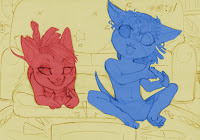 Con Valder, giocando ai videogiochi (forme mannare)
Con Valder, giocando ai videogiochi (forme mannare)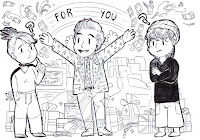 Anya, Mr. Storm e Valder
Anya, Mr. Storm e Valder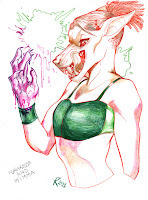
 Anya che bacia mr. Storm
Anya che bacia mr. Storm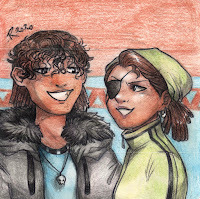 Aspetto scambiato con suo fratello
Aspetto scambiato con suo fratello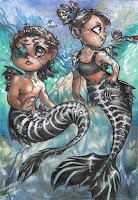 Forme da sirene
Forme da sirene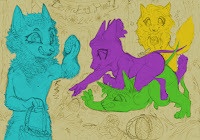
 Profilo della forma mannara
Profilo della forma mannara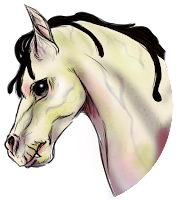 Forma da "Pale Horse"
Forma da "Pale Horse"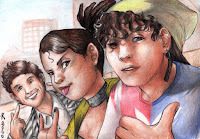 Con Valder and Mr. Storm
Con Valder and Mr. Storm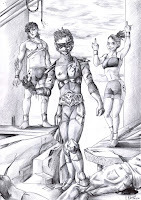 Outfit da super
Outfit da super
 Con Mr. Storm, Cherry, Valder e Prince il puma
Con Mr. Storm, Cherry, Valder e Prince il puma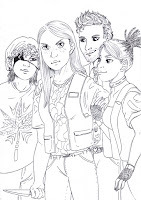 Con Mr. Storm, Cherry e Valder
Con Mr. Storm, Cherry e Valder Forma mannara (+ Valder)
Forma mannara (+ Valder)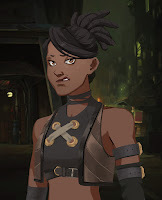 Anya quarantenne
Anya quarantenne
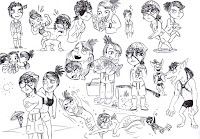 Chibi!
Chibi!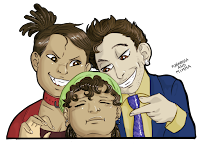 Vessando Valder insieme a Mister Storm
Vessando Valder insieme a Mister Storm Anya e Valder che imitano Mister Storm
Anya e Valder che imitano Mister Storm🌵🎨 Tutti i disegni di questa pagina (e probabilmente anche delle altre, se non è diversamente specificato) sono stati realizzati dalle nostre artiste, Furiarossa e Mimma. Potete vedere di più del loro lavoro e supportarle sulla loro pagina di Patreon. Diventate mecenati delle arti! 🌵🎨
August 16, 2022
Le più esilaranti immagini stock [parte 1]
Una fotografia stock è un'immagine in formato digitale, utilizzata per scopi commerciali o creativi: sostituisce il materiale che un fotografo professionista potrebbe produrre su commissione. Riassumendo in parole povere, si tratta di una foto d’archivio, a disposizione di chiunque voglia usarla. Sotto compenso, ovviamente!Tipo, se volete una bellissima copertina per il vostro libro, potete andare su un sito stock e comprare un'illustrazione fighissima che potete usare!Sui siti di immagini stock si trova di tutto: immagini di uomini d'affari, striscioni e banner per i siti, foto specifiche di piante per stampare i vostri personali manualetti, vecchietti che mangiano il gelato e banane che ballano. I fotografi stock sono persone estremamente creative, che cercano di portare alla rete anche immagini che hanno un interesse estremamente di nicchia! Così di nicchia, in effetti, che a volte i risultati sono ESILARANTI.Ecco perché vogliamo condividere con voi alcune delle immagini stock più, ehm, particolari della rete! E nel caso vogliate comprarle, per usarle, chesappiamo, per i vostri libri, o semplicemente per avere le copie in altissima definizione da stampare nella vostra cameretta (non vi giudichiamo, siamo tipi strani pure noi), la maggior parte delle foto avranno scritto il sito da cui sono state prese e il numero identificativo. Alcune avranno solo il sito, perché purtroppo quando le abbiamo salvate ci siamo scordati di salvare anche il link e perché il sito da cui provenivano non ha funzione automatica che permette di downloadarle con il numero, ma una semplice ricerca con google immagini dovrebbe permettervi di trovarle!In futuro proveremo a risolvere questo piccolo problema creditando un pochino meglio, don't worry!
(A proposito, lo sapevate che le nostre artiste hanno un profilo Shutterstock e uno Adobe Stock? Sì, vendono foto e illustrazioni stock anche loro! Potete comprare le loro cose e stamparvici le magliette, metterle nei vostri libri o sui vostri siti! Ma ora basta fare pubblicità a caso, torniamo a sghignazzare)
Disclaimer: alcune battute le capiremo solo noi, altre solo noi con i nostri lettori, ma a prescindere le immagini stock sono comunque esilaranti, quindi inventatevi i vostri scenari o guardatele pure con i punti interrogativi al posto degli occhi, va bene lo stesso.Siete pronti ad essere confusi?
Tre due uno, pronti, via!
Queste noi due le immaginiamo sequenziali:
 Potere del fuuuocooo
Potere del fuuuocooo Potere del fuoocooo in azione
Potere del fuoocooo in azioneL'avete mai visto il bellissimo film franco-italiano "il Vizietto"? Conoscete il mitico Alben? Se non lo conoscete dovete rimediare. Se lo conoscete, questo è per voi:
 Albin centralinista AU
Albin centralinista AUMa torniamo a cose più, ehm... normali?
 Serfing on the webbe.
Serfing on the webbe. TRO.
TRO. Accrocchiarsi sul posto di lavoro. Perché no? In fondo è una donna libera.
Accrocchiarsi sul posto di lavoro. Perché no? In fondo è una donna libera. Caccia grossaL'anti Clint Reptiles:
Caccia grossaL'anti Clint Reptiles: Also the world is a scary place when you're a noodle with a head
Also the world is a scary place when you're a noodle with a head I-io... Non lo so. Proprio non so.
I-io... Non lo so. Proprio non so.
 Upsetti spaghetti
Upsetti spaghetti
 The Harmacist
The Harmacist Immagini dal periodo in cui Hannibal drogava Clarice, la quale rivolge la sua rabbia contro un coniglio infeltrito.
Immagini dal periodo in cui Hannibal drogava Clarice, la quale rivolge la sua rabbia contro un coniglio infeltrito. Si tiene stretta lo spirito santo.
Si tiene stretta lo spirito santo. Sviluppa un bel rapporto col tuo cucciolo leccandolo o vomitandoci sopra
Sviluppa un bel rapporto col tuo cucciolo leccandolo o vomitandoci sopra 
 Non più wrinkly
Non più wrinkly
 Per Pasqua ricette tradizionali. Tanto niente è buono come la tastiera napoletana!
Per Pasqua ricette tradizionali. Tanto niente è buono come la tastiera napoletana!
 Tranne mangiare un panino facendosi i fatti propri mentre una partorisce, quello è il non plus ultra
Tranne mangiare un panino facendosi i fatti propri mentre una partorisce, quello è il non plus ultra
 Quando ti arrabbi perché non hai visto l'amico nel momento del bisogno.
Quando ti arrabbi perché non hai visto l'amico nel momento del bisogno.
 Giorgia e Mika che fanno le pulizie. (L'avete visto Stasera Casa Mika? No? Recuperatevelo)
Giorgia e Mika che fanno le pulizie. (L'avete visto Stasera Casa Mika? No? Recuperatevelo) Il nuovo successo di Stephen King, the Printing DISMANGLER
Il nuovo successo di Stephen King, the Printing DISMANGLER
 La signorina agente segreto è molto brava nel suo mestiere.
La signorina agente segreto è molto brava nel suo mestiere.
 Il villain che ci meritiamo. Lo chiameremmo Abbacus, boh, ispirati.
Il villain che ci meritiamo. Lo chiameremmo Abbacus, boh, ispirati.
 Nel frattempo, le sirene reverse...
Nel frattempo, le sirene reverse... Che entusiasmo Black Mirror!
Che entusiasmo Black Mirror! Come si chiama questo stile di nuoto?
Come si chiama questo stile di nuoto? La nipote preferita di nonna
La nipote preferita di nonna
 Quando non capisci bene il significato di colpo sotto, ma ti butti lo stesso
Quando non capisci bene il significato di colpo sotto, ma ti butti lo stesso C'è qualcosa di troppo intenso nell'uomo medievale che mangia un waffle gelato. Passiamo oltre.
C'è qualcosa di troppo intenso nell'uomo medievale che mangia un waffle gelato. Passiamo oltre. A ripensarci bene, meglio tornare all'uomo del waffle.
A ripensarci bene, meglio tornare all'uomo del waffle. Quando un ragazzo yaoi fa brutto.
Quando un ragazzo yaoi fa brutto. Mountain bike levate, arriva lui nella natura
Mountain bike levate, arriva lui nella natura "A chi clan apparteni?"
"A chi clan apparteni?"Quindi? Ve la siete fatta una risatina? Ne volete ancora? Che ne vogliate oppure no, arriveranno comunque.
Nessuno fermerà l'attacco delle foto stock, muhahaahaha!


August 13, 2022
Recensione - Novecento (Alessandro Baricco)
 Vi trovate davanti cosa? Il titolo "Novecento", l'autore, Alessandro Baricco, ed una nave stilizzata. Per giocare con noi, quello che vi chiediamo di fare è di provare ad indovinare di cosa parli il libro solo da questi tre elementi. Pensateci, scrivete un commento e solo dopo proseguite con la storia. (Se lo avete già letto, non barate e non fate anticipazioni! Se volete partecipare, potete dire l'impressione che ne avete avuto prima di leggerlo). Ci siete? Fatto? Abbiamo voluto fare questo giochino semplicemente perché, sebbene siano coerenti con la storia, titolo e copertina ci avevano dato l'impressione di stare per leggere qualcosa come un saggio storico sulle emigrazioni italiane verso l'America di inizio novecento; la prospettiva sulla storia cambia però completamente quando scopri che "Novecento" non è solo un periodo storico, ma il nome del protagonista. Non ci resta che spiegarvi finalmente la trama, così potrete confrontarlo con la vostra ipotesi e vedere quanto è vicina alla realtà.Se ci avete azzeccato avete l'autorizzazione a festeggiare con balletti e autoproclamarvi nuovo Oracolo della vostra città.
Vi trovate davanti cosa? Il titolo "Novecento", l'autore, Alessandro Baricco, ed una nave stilizzata. Per giocare con noi, quello che vi chiediamo di fare è di provare ad indovinare di cosa parli il libro solo da questi tre elementi. Pensateci, scrivete un commento e solo dopo proseguite con la storia. (Se lo avete già letto, non barate e non fate anticipazioni! Se volete partecipare, potete dire l'impressione che ne avete avuto prima di leggerlo). Ci siete? Fatto? Abbiamo voluto fare questo giochino semplicemente perché, sebbene siano coerenti con la storia, titolo e copertina ci avevano dato l'impressione di stare per leggere qualcosa come un saggio storico sulle emigrazioni italiane verso l'America di inizio novecento; la prospettiva sulla storia cambia però completamente quando scopri che "Novecento" non è solo un periodo storico, ma il nome del protagonista. Non ci resta che spiegarvi finalmente la trama, così potrete confrontarlo con la vostra ipotesi e vedere quanto è vicina alla realtà.Se ci avete azzeccato avete l'autorizzazione a festeggiare con balletti e autoproclamarvi nuovo Oracolo della vostra città. 1. La tramaNovecento non è né un romanzo né un saggio: è un monologo teatrale, che l'autore descrive come un incrocio tra "una vera messa in scena e un racconto da leggere ad alta voce". La voce narrante è quella di Tim Tooney (scritto per essere interpretato dall'attore Eugenio Allegri, di cui fu effettivamente l'ultimo ruolo a teatro prima di passare al piccolo schermo. Sì, è appena apparsa una curiosità teatrale del '94 selvatica, perché le Recensioni Spinose sono divertimento e cultura); che, oltre ad avere il nome che potrebbe avere un personaggio della Warner Bros, è un trombettista professionista imbarcatosi sul piroscafo Virginian per lavorare con l'orchestra di bordo ed intrattenere i passeggeri.Lì incontra il protagonista della storia: un pianista dal sobrio nome di Danny Boodman T.D. Lemon Novecento, che però è magnanimo e per abbreviare, dovendo scegliere tra il farsi chiamare con due consonanti che fanno il suono di una notifica su cellulare, un agrume, un numero o un nome da persona, sceglie ovviamente di farsi chiamare Novecento.È un uomo la cui abilità al pianoforte è quasi sovrannaturale: è in grado di incantare il pubblico, suonare anche in mezzo alla tempesta, eseguire brani impossibili senza che nessuno glielo abbia mai insegnato...D'altra parte, la sua personalità è comune e sobria tanto quanto il suo nome, e, sebbene il suo bel carattere lo renda presto un grande amico di Tim Tooney, il caro Novecento non manca di stranezze. Ad esempio, non ha mai lasciato la nave in vita sua: è stato trovato ancora neonato dentro lo stesso pianoforte che suonerà da grande dal fuochista Danny, probabilmente nato ed abbandonato sulla Virginian. L'uomo lo ha preso, adottato ed allevato come suo sulla nave (e gli ha anche dato il nome in un delirio avantgardistico degno delle peggiori password per e-mail). Novecento ha iniziato da piccolo a suonare prodigiosamente il piano ed a guadagnarsi così da vivere, ma lì, sul piroscafo, ha trovato il suo posto e messo radici così profonde da non azzardarsi a conoscere di più del mondo oltre la Virginian se non nelle proprie fantasie. E ora sembra proprio che abbia tutta l'intenzione di passare la vita intera sullo stesso piroscafo, abbandonando la fama e la fortuna che otterrebbe portando il suo talento da musicista sulla terraferma...Il monologo, pur essendo un volumetto agile ricco di jazz e marinai, segue tutta la storia della vita di Novecento dal suo inizio alla sua fine, accennando di tanto in tanto all'arrivo di altri personaggi secondari che passano nella vita di Novecento; ma i protagonisti rimangono lui, il suo pianoforte e la sua amata Virginian, in quella che sembra una simbiosi indissolubile.
1. La tramaNovecento non è né un romanzo né un saggio: è un monologo teatrale, che l'autore descrive come un incrocio tra "una vera messa in scena e un racconto da leggere ad alta voce". La voce narrante è quella di Tim Tooney (scritto per essere interpretato dall'attore Eugenio Allegri, di cui fu effettivamente l'ultimo ruolo a teatro prima di passare al piccolo schermo. Sì, è appena apparsa una curiosità teatrale del '94 selvatica, perché le Recensioni Spinose sono divertimento e cultura); che, oltre ad avere il nome che potrebbe avere un personaggio della Warner Bros, è un trombettista professionista imbarcatosi sul piroscafo Virginian per lavorare con l'orchestra di bordo ed intrattenere i passeggeri.Lì incontra il protagonista della storia: un pianista dal sobrio nome di Danny Boodman T.D. Lemon Novecento, che però è magnanimo e per abbreviare, dovendo scegliere tra il farsi chiamare con due consonanti che fanno il suono di una notifica su cellulare, un agrume, un numero o un nome da persona, sceglie ovviamente di farsi chiamare Novecento.È un uomo la cui abilità al pianoforte è quasi sovrannaturale: è in grado di incantare il pubblico, suonare anche in mezzo alla tempesta, eseguire brani impossibili senza che nessuno glielo abbia mai insegnato...D'altra parte, la sua personalità è comune e sobria tanto quanto il suo nome, e, sebbene il suo bel carattere lo renda presto un grande amico di Tim Tooney, il caro Novecento non manca di stranezze. Ad esempio, non ha mai lasciato la nave in vita sua: è stato trovato ancora neonato dentro lo stesso pianoforte che suonerà da grande dal fuochista Danny, probabilmente nato ed abbandonato sulla Virginian. L'uomo lo ha preso, adottato ed allevato come suo sulla nave (e gli ha anche dato il nome in un delirio avantgardistico degno delle peggiori password per e-mail). Novecento ha iniziato da piccolo a suonare prodigiosamente il piano ed a guadagnarsi così da vivere, ma lì, sul piroscafo, ha trovato il suo posto e messo radici così profonde da non azzardarsi a conoscere di più del mondo oltre la Virginian se non nelle proprie fantasie. E ora sembra proprio che abbia tutta l'intenzione di passare la vita intera sullo stesso piroscafo, abbandonando la fama e la fortuna che otterrebbe portando il suo talento da musicista sulla terraferma...Il monologo, pur essendo un volumetto agile ricco di jazz e marinai, segue tutta la storia della vita di Novecento dal suo inizio alla sua fine, accennando di tanto in tanto all'arrivo di altri personaggi secondari che passano nella vita di Novecento; ma i protagonisti rimangono lui, il suo pianoforte e la sua amata Virginian, in quella che sembra una simbiosi indissolubile. 2. La copertina
Quella che vi abbiamo mostrato all'inizio è la vecchia edizione della Feltrinelli, che ci sembra essere ormai stata sostituita in pianta stabile da questa:

Dell'altra ci piacevano i colori forti, ma l'idea del fumo e dell'acqua composti dalle parole del libro è davvero carina, soprattuto perchè è estetica ma quando ti sforzi di leggere tutte le paroline ondulate puoi già iniziare a ridere senza manco aprire il libro.La composizione però è sbilanciata, lasciando lo spazio vuoto sopra la nave un po' troppo vistoso. Piazzateci un gabbiano, un pianoforte volante, Novecento che rotea, ma non lasciatelo così, su.
La Feltrinelli è l'unica casa editrice italiana ad essersi occupata di Novecento, ma si è divertita nel tempo a fare diverse varianti che, per brevità, non potremo riportare tutte. Anzi, il libro sembra aver riscosso parecchio successo anche all'estero, perchè praticamente ogni paese ha la sua versione della copertina, che sono tutte variazioni sul tema di "nave nel mare" con occasionali aggiunte di pianoforti o note musicali sopra, sotto, e di lato, perciò ne riporteremo solo alcune.Questa è una delle tante:
 Onde sonore (ba dum tss 🥁)
Onde sonore (ba dum tss 🥁)Per questa particolare storia, nonostante noi abbiamo un evidentissimo debole per le copertine complicate, intricate, fitte di dettagli, possiamo apprezzare design più semplici. Il Baricco sceglie con cura le parole da usare e ne usa poche, pesate, senza descrizioni particolarmente cinematografiche, perciò stili più leggeri si adattano bene alla sua prosa.Questa qui l'abbiamo trovata proprio carina, con la Virginian che cavalca le note, però non riesce ad avere la stessa "ruvidezza" della precedente e rispecchia di meno la storia, pur restando veramente graziosa ed a tema. Se avessero unito quello stile a questa composizione, probabilmente sarebbe stata una copertina perfetta.
Nel frattempo i francesi erano molto preoccupati che non si capisse bene che Novecento era un pianista, quindi hanno fatto la cosa più minimale che hanno trovato e cambiato il titolo, che non è più "Novecento" (nel caso potessi confonderti e pensare che si tratti di un numero nell'ordine delle centinaia e non un musicista), ma "Novecento: pianiste", con una mano che suona i tasti bianchi e neri.Probabilmente la prima idea era "Novecento = IL PIANISTA CHE SUONA IL PIANO" in francese, ma avranno deciso di andarci un po' più delicati.

Ci sembra giusto dare uno spazietto anche alla variante rumena, che esilia Novecento a prua ma almeno gli da' uno spazietto per comparire. È una delle più complicate, con delle belle tinte calde. Caruccia.
 Ed ora attenzione, perchè volevamo finire in bellezza. La recensione si tinge di romantica intensità, perchè l'hot take di Anagrama, la casa editrice ispanica, era che la copertina di "Novecento" dovesse essere fatta esclusivamente con una grafica che è un mix di quella dei siti sugli angeli custodi, un Harmony e una slide di Power Point.Intensa. Sconvolgente.
Ed ora attenzione, perchè volevamo finire in bellezza. La recensione si tinge di romantica intensità, perchè l'hot take di Anagrama, la casa editrice ispanica, era che la copertina di "Novecento" dovesse essere fatta esclusivamente con una grafica che è un mix di quella dei siti sugli angeli custodi, un Harmony e una slide di Power Point.Intensa. Sconvolgente.Anzi, "Novecento" non era abbastanza drammatica, quindi andava aggiunto "la leyenda del pianista en el océano", e presa una bella illustrazione con un tipo che sembra stare impalato così, sull'acqua. Chissà cosa farà, il pianista leyendario, in quali posti andrà sotto questo cielo rosa con quattro nuvole lunghe messe strategicamente per non oscurare la luna. Vai pianista leyendario, facci sognare, dacci le ali. Chissà se anche noi saremo en el océano come te un giorno...
 "Oh! Chissà se mi noterà mai, il Transatlantico-senpai..."
"Oh! Chissà se mi noterà mai, il Transatlantico-senpai..."
3. Cosa ci è piaciuto Lo stile eccentrico del monologo, a tratti buffo a tratti serissimo, è fondamentale nel mettere la meraviglia ed il mistero che abbelliscono la strana storia di Novecento. Nonostante sia un monologo teatrale e, dunque, scritto diversamente da un romanzo "classico" -- in fondo si suppone essere un lungo discorso portato avanti dallo stesso personaggio -- riesce a trasformare la parzialità del punto di vista di Tim in uno strumento per rendere la narrazione più interessante.
La psicologia di Novecento è molto particolare: è un personaggio giocoso, curioso, per certe cose ancora bambino, ma con motivazioni e idee forti a spingerlo. Non possiamo approfondire oltre per non entrare nel territorio minato degli spoiler, però abbiamo gradito il modo in cui è stato gestito.
Va anche detto che, nonostante la brevità in cui si svolge e quindi il poco "tempo" a sua disposizione, lo scrittore non lascia nessuna domanda in sospeso e chiude l'intera storia con una scena finale d'impatto.
4. Cosa non ci è piaciuto La vistosa, fosforescente assenza di personaggi femminili. Le donne non vengono mai citate come personaggi, ma come parte di un ambiente -- ad esempio, le donne ricche appaiono come passeggere di contorno della Virginian -- o come ideali vaghi: viene talvolta citata solamente l'idea di "trovare moglie" e la cosa finisce lì. Non c'è un'amica, una cuoca, una ricca, una serva, una parente che abbia un qualunque peso nella storia. Un gran peccato. È vero che agli inizi del novecento le donne non avevano ancora raggiunto certe libertà e ruoli lavorativi come oggi, ma che il cinquanta per cento della popolazione si volatilizzi è... abbastanza strano.
Voto complessivo: 72 su 100. Congratulazioni, monologo teatrale bello, sei stato promosso! A chi lo consigliamo: A chi vuole una lettura snella ma interessante, un libricino da leggere in un pomeriggio e che si può portare in spiaggia, sotto un albero in campagna, sull'autobus o anche spaparanzati a casa. È un libro "conveniente", che dà molte più emozioni del tempo che vi prende. Probabilmente, se vi piacciono le storie meno demenziali di Stefano Benni o quel piccolo tesoro de "Il gabbiano Jonathan Livingstone", questo libro potrebbe regalarvi bei momenti.Se leggete praticamente solo high fantasy potrebbe invece non colpirvi, perché quel pizzico di atmosfera misteriosa, che per noi ha arricchito la narrazione, è mescolata ad un'ambientazione molto più realistica e "secca", che per un attimo promette magia e poi potrebbe non mantenere rimanendo molto indietro rispetto ai certi elfici standard.
Dove potete comprare il libro? La migliore possibilità di ottenerne una copia velocemente è su internet: noi vi indirizziamo ai buoni prezzi e le spedizioni veloci di Amazon, con cui caso vuole abbiamo un’affiliazione. Perciò se vi salta il ghiribizzo di volere in casa un libro sulla cui copertina c'è un piroscafo transatlantico (come potete chiamarvi collezioniste/i di libri se non avete un libro con un piroscafo transatlantico in copertina?), date un’occhiata all’inserzione da link che vi lasciamo qui!Così, voi pagate proprio gnente in più e non vi cambia nulla (tranne che cliccare sull'indirizzo che vi lasciamo è più comodo), mentre noi ci guadagniamo un paio di centesimi extra. Consideratelo. Ecco il link! Se volete leggerlo prima di comprarlo, invece di piratarlo, non dimenticate di provare a fare un salto in biblioteca! Date amore alle vostre biblioteche!Questo libro, poi, ha avuto anche una serie di adattamenti sia teatrali che cinematografici, quindi potreste persino seguire la storia da un media diverso (c'è pure un audiolibro letto da Stefano Benni!), ma noi ci limiteremo a parlare della nostra cosa preferita: la pagina scritta.
Che cosa ne pensate del libro? Siete d'accordo con noi su tutto, siamo stati troppo cattivi (perché un po' cattivi lo siamo sempre, è normale nelle recensioni spinose) o siamo stati troppo indulgenti? Fateci sapere, e alla prossima recensione! P.S.: Suggeriteci libri da recensire! (Meglio se gratis, che siamo senza soldi. Ma accettiamo di tutto). Nota: in tanti si limitano a dirci il titolo del libro da recensire, o addirittura a scrivere un sacco di titoli in fila, e non abbiamo davvero il tempo di andare a controllare una ad una tutte le trame per decidere se ci interessano o no, perciò per favore potete scrivere un piccolo abbozzo di cosa parla il libro? Così possiamo decidere se controllare la trama ed eventualmente leggerlo. Per fare un esempio: "Ehi, Cactus! Vi consiglio La Magia del Lupo di Michelle Paver perché è un fantasy diverso dal solito, ambientato nella preistoria, ed è molto avventuroso!" oppure "Ciao, vi consiglio Nina, La Bambina della Sesta Luna, perché è un libro per bambini davvero brutto e mi piacerebbe leggere una recensione scritta da voi per spanciarmi dalle risate". Cercate i nostri segni, trovate l'ispirazione, e alla prossima recensione!





